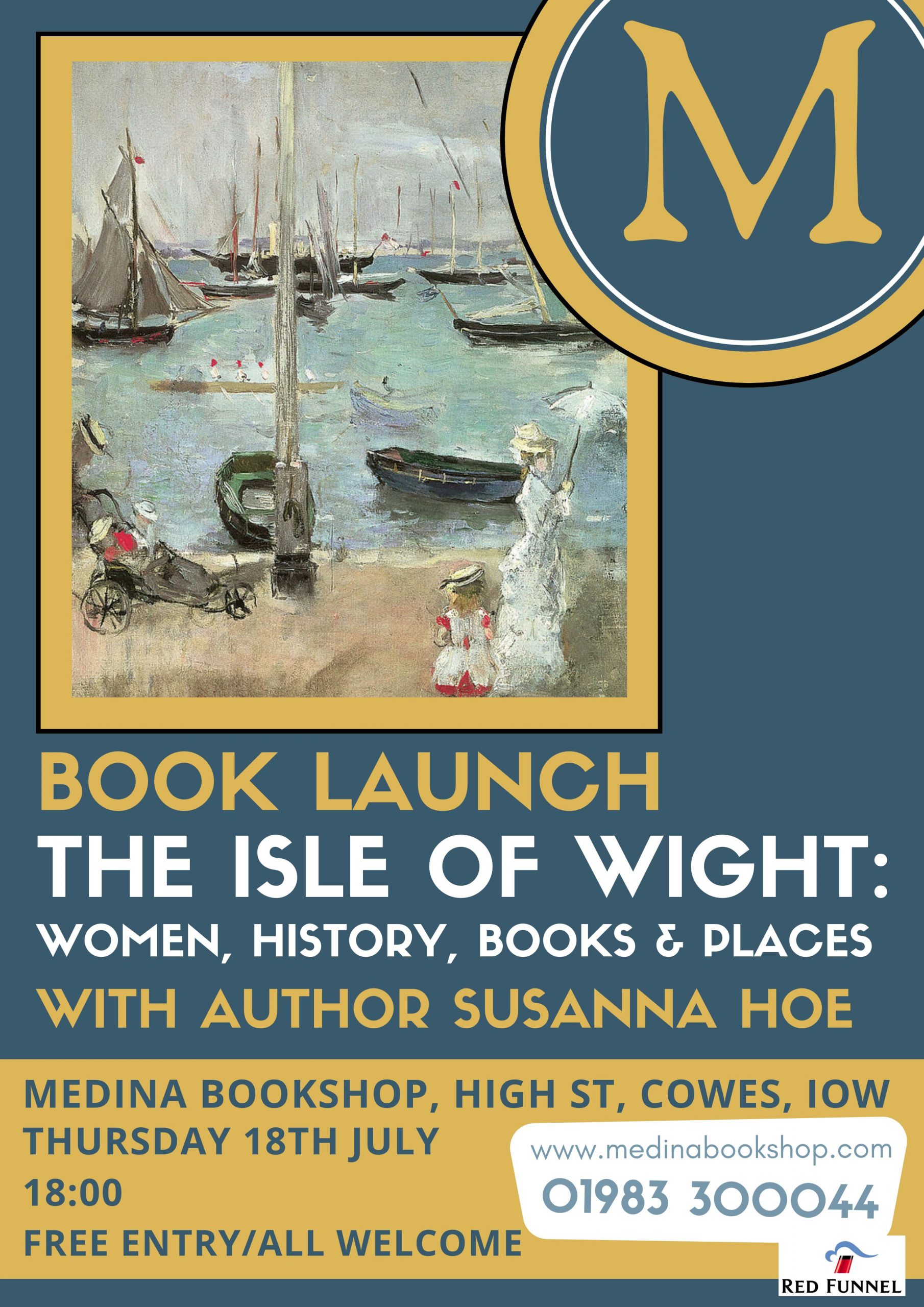The Isle of Wight: Women, History, Books and Places does not contain a chapter about Queen Victoria and Osborne House, which are, perhaps, all some know about the Island. But somehow she sneaks into several chapters. If her daughter, Princess Beatrice, is known as her mother’s companion, she may be less familiar as Governor of the Island, living in Carisbrooke Castle and responsible for the foundation of the Carisbrooke Castle Museum, one of the Island’s jewels. She has her place in its history, as does her sister, artist and rebel Princess Louise. Given more space is Isabella de Fortibus, known as ‘Lady of the Isle’. She was the last Lord of the Island, ruling almost as a queen from Carisbrooke Castle in the 13th century, in defiance of the king the other side of the Solent. Before her was 9th century Queen Osburga, of Arreton Manor, mother of Alfred the Great. But the book is not only about royalty, even though it includes visits from Russian, Austro-Hungarian, and French Empresses. The Island had earlier withstood French invasions, following Romans who left their villas, two of them now excavated and open to the public.
The Island is sometimes known as ‘Dinosaur Isle’, and that chapter begins the book, not so much about the creatures, but those who hunted for, and found, their fossils. It has also been called ‘Ghost Island’, and there are plenty of those, and of witches burnt at the stake, and smugglers – all aptly named ‘Outsiders’. There is a chapter on ‘Irregular Relations’ which includes a smuggler who climbed her way to the top of French society via a royal Comte, and the delightfully-named, fast-living, 16th century Dowsabel Mills, who also opened a girls school. Nuns and philanthropists find their place, as does a notable pioneer photographer and a now recognised marine engineer, powerboat racers, aviatrixes, sailors, those campaigning for women’s suffrage, and a spy or two, one of whom was nearly hanged. That is not to forget writers and artists such as the French Impressionist Berthe Morisot. Her delicate and evocative watercolour is not only a memento of her 1875 Cowes honeymoon, but also adorns the book’s cover.
Kindly sponsored by Red Funnel


